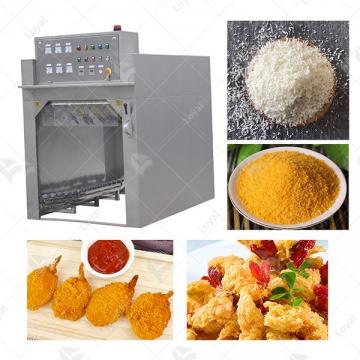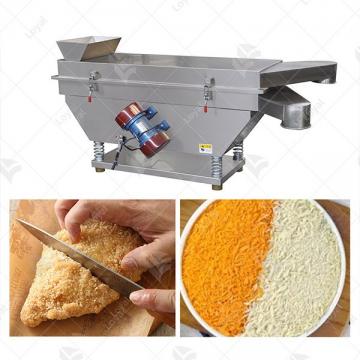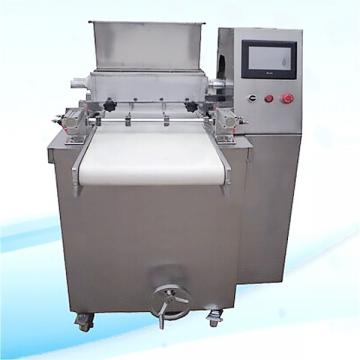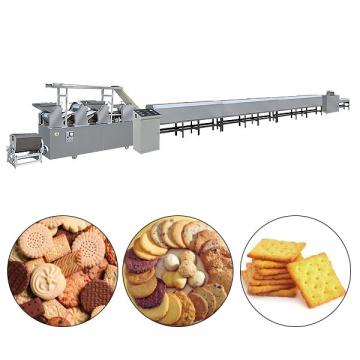
- Shandong Loyal Industrial Co.,Ltd.
- Macaroni Production Machine Instant Noodle Machine Biscuit Making Machine
Home> Company News> Everything You Need To Know About Kurkure Production Line

Everything You Need To Know About Kurkure Production Line
2024-12-24 15:50:05Importance of Innovations in the Kurkure Production Line
The significance of innovations in the Kurkure production line cannot be overstated. As the demand for Kurkure continues to rise globally, the need for efficient, high-quality production methods becomes increasingly crucial. Innovations in the production line have played a pivotal role in meeting this demand while maintaining the snack's reputation for excellence.
Firstly, innovations in the Kurkure production line have greatly enhanced efficiency. By incorporating advanced machinery and automation, the production process has been streamlined, reducing waste and increasing throughput. This has allowed manufacturers to produce larger quantities of Kurkure in a shorter period of time, meeting the growing demand without compromising on quality.
Secondly, innovations have improved product quality. Advancements in technology have allowed manufacturers to refine the production process, ensuring that each batch of Kurkure meets the highest standards of taste, texture, and appearance. This consistency in quality is essential for maintaining consumer satisfaction and loyalty.
Moreover, innovations in the Kurkure production line have contributed to sustainability. By optimizing the production process, manufacturers have been able to reduce energy consumption and waste generation, making the production of Kurkure more environmentally friendly. This aligns with the growing consumer preference for sustainable and eco-friendly products.
Additionally, innovations have opened up new opportunities for product diversification. With the ability to quickly and efficiently produce a variety of flavors and textures, manufacturers can cater to the diverse tastes and preferences of consumers worldwide. This versatility has helped Kurkure to remain competitive in the global snack market.
In conclusion, innovations in the Kurkure production line have been instrumental in enhancing efficiency, improving product quality, promoting sustainability, and enabling product diversification.

Technological Innovations
Technological innovations in the Kurkure production line have been crucial in enhancing efficiency, improving product quality, and enabling sustainability. Here are some specific examples of technological innovations that have impacted the Kurkure production process:
1. Advanced Extrusion Technology
Motor and Gearbox Transmission: The use of belt transmission between the motor and gearbox reduces energy consumption, making the production process more efficient.
Variable Frequency Drives (VFDs): VFDs are used to regulate the speed of the feed, main drive, and rotating cutting devices. This ensures stable and efficient operation while minimizing energy consumption.
Alloy Steel Screws: The screws used in the extruder are made of alloy steel, which increases their lifespan and allows them to handle a wider variety of materials and products.
2. Automated Lubrication Systems
Continuous Lubrication: Automated lubrication systems provide continuous lubrication to the extruder components, reducing friction and wear, and extending the lifespan of the equipment.
Energy Efficiency: By reducing friction, these systems also contribute to lower energy consumption and improved overall efficiency.
3. Intelligent Control Systems
Touchscreen Operation: Modern Kurkure production lines often feature touchscreen controls that make it easier for operators to monitor and adjust the production process.
Machine Learning Algorithms: Advanced control systems use machine learning algorithms to analyze production data and optimize the production process in real-time. This leads to improved product quality and reduced waste.
4. Sustainable Manufacturing Practices
Energy-Efficient Machinery: Manufacturers have invested in energy-efficient machinery that reduces electricity consumption and carbon emissions.
Waste Reduction: Innovations in the production process have led to reduced waste generation, making the production of Kurkure more environmentally friendly.
5. Product Diversification and Customization
Flexible Production Lines: Advanced production lines can quickly switch between different products and flavors, enabling manufacturers to cater to diverse consumer preferences.
Customized Products: With the help of technological innovations, manufacturers can now offer customized Kurkure products that meet specific consumer demands.
6. Enhanced Monitoring and Maintenance
Real-Time Monitoring: Advanced sensors and monitoring systems provide real-time data on the status of the production line, allowing for quick identification and resolution of potential issues.
Predictive Maintenance: By analyzing production data, manufacturers can predict when equipment maintenance is needed, reducing unexpected downtime and extending the lifespan of the machinery.

Ingredient and Recipe Innovations
Innovations in the Kurkure production line have not only focused on machinery and technology but have also extended to ingredient and recipe innovations. These advancements have significantly enhanced the efficiency of the production process while simultaneously improving the taste and quality of the final product.
|
Enhanced Ingredient Handling |
One of the key innovations in the Kurkure production line is the improved handling of ingredients. Modern food machinery now includes advanced ingredient feeders and mixing systems that ensure precise measurement and uniform mixing of all ingredients. This ensures that every batch of Kurkure produced maintains consistent taste and texture, enhancing consumer satisfaction. |
|
Innovative Recipe Formulations |
The Kurkure production line has also witnessed significant advancements in recipe formulations. Food scientists and technologists have developed new recipes that utilize a wider range of ingredients, including healthier alternatives such as whole grains, pulses, and nuts. These new recipes not only cater to the evolving consumer preferences for healthier snacks but also provide a unique taste experience that sets Kurkure apart from its competitors. |
|
Automated Recipe Management |
To further enhance efficiency, the Kurkure production line now features automated recipe management systems. These systems allow operators to input specific recipes and ingredient quantities, ensuring that the correct proportions are used for each batch. This reduces the risk of human error and ensures consistency across all production runs. |
|
Flavor and Texture Enhancements |
In addition to healthier ingredients, the Kurkure production line has also seen innovations in flavor and texture enhancements. New flavorings and seasonings are continuously being developed to cater to the diverse tastes of consumers worldwide. Moreover, advanced texturing techniques, such as the use of air-puffing technology, have been incorporated to create a lighter and crispier snack that consumers love. |
|
Sustainability in Ingredient Selection |
In recent years, sustainability has become a critical factor in food production. The Kurkure production line has responded to this challenge by incorporating sustainable ingredient selection practices. Manufacturers now prioritize the use of locally sourced and organic ingredients, reducing the carbon footprint of the production process and supporting local farmers and communities. |
In conclusion, ingredient and recipe innovations have played a crucial role in enhancing the efficiency and taste of the Kurkure production line. By leveraging advanced food machinery and technology, food scientists and technologists have developed new recipes and ingredient handling techniques that ensure consistent taste, texture, and quality. These innovations have not only met the growing demand for Kurkure but have also helped the brand remain competitive in the global snack market. As consumer preferences continue to evolve, the Kurkure production line will undoubtedly see even more innovations in ingredient and recipe formulations, driving further improvements in efficiency and taste.

Process and Workflow Innovations
In addition to ingredient and recipe innovations, the Kurkure production line has also undergone significant process and workflow innovations. These advancements have streamlined the production process, enhancing efficiency and reducing waste.
|
Automated Production Lines |
One of the most significant process innovations in the Kurkure production line is the adoption of automated production lines. These lines utilize advanced robotics and automation technology to handle tasks such as ingredient feeding, mixing, shaping, and packaging. By automating these processes, manufacturers have been able to significantly reduce labor costs and increase production speeds. |
|
Integrated Quality Control Systems |
Quality control is crucial in any food production process, and the Kurkure production line is no exception. To ensure consistent quality, manufacturers have integrated advanced quality control systems into the production line. These systems use sensors and cameras to monitor the production process in real-time, identifying any deviations from standard operating procedures and taking corrective action as needed. This ensures that only high-quality Kurkure reaches consumers. |
|
Lean Manufacturing Techniques |
Lean manufacturing techniques have also been incorporated into the Kurkure production line to reduce waste and improve efficiency. By identifying and eliminating non-value-adding steps in the production process, manufacturers have been able to streamline the workflow and increase throughput. This has not only reduced production costs but has also improved the overall sustainability of the production process. |
|
Real-Time Data Analytics |
Another key innovation in the Kurkure production line is the use of real-time data analytics. Manufacturers now collect data on various aspects of the production process, such as ingredient usage, production speeds, and quality control results. This data is then analyzed using advanced analytics tools to identify trends, predict future demand, and optimize the production process. By leveraging real-time data, manufacturers have been able to make more informed decisions, reducing waste and improving efficiency. |
|
Continuous Improvement Culture |
Finally, the Kurkure production line has adopted a continuous improvement culture. Manufacturers regularly review and update their production processes, incorporating new technologies and techniques as they emerge. This ensures that the production line remains competitive and able to meet the evolving needs of consumers. |

Challenges and Future Directions for Kurkure Production
Challenges
1.Maintaining Quality and Consistency:
Ensuring that every batch of Kurkure meets the high quality standards set by consumers is a continuous challenge. Variations in ingredient quality, processing conditions, and packaging can all affect the final product.
2.Scaling Production Efficiently:
As demand grows, scaling up production while maintaining efficiency and quality can be difficult. Balancing increased capacity with operational costs and maintaining a lean production process is crucial.
3.Managing Ingredient Costs and Supply Chain:
Fluctuations in the prices of key ingredients such as grains, oils, and spices can impact production costs. Ensuring a stable and reliable supply chain is essential to mitigate these risks.
4.Addressing Consumer Health Concerns:
With increasing health awareness, consumers are looking for snacks that are lower in fat, sugar, and unhealthy additives. Kurkure manufacturers need to innovate to meet these demands while maintaining taste and appeal.
5.Environmental Impact and Sustainability:
The production of snacks like Kurkure generates waste and consumes resources. Addressing environmental concerns, such as reducing packaging waste and improving energy efficiency, is important for long-term sustainability.
6.Competition and Market Saturation:
The snack market is highly competitive, with many brands offering similar products. Finding ways to differentiate Kurkure and stand out in a crowded market is a challenge.
Future Directions
1.Innovation in Ingredients and Formulations:
Continuously exploring new ingredients and formulations that cater to health-conscious consumers, such as whole grains, plant-based proteins, and reduced-fat options.
2.Digitalization and Automation:
Leveraging digital technologies and automation to improve production efficiency, reduce waste, and enhance quality control. This includes the use of IoT sensors, AI, and machine learning for predictive maintenance and real-time monitoring.
3.Sustainable Packaging Solutions:
Developing packaging that is recyclable, biodegradable, or made from sustainable materials. Reducing packaging waste and improving the circular economy are key priorities.
4.Expanding Market Reach:
Exploring new markets and demographics, such as international markets and younger consumers, through targeted marketing and product customization.
5.Enhancing Consumer Engagement:
Using digital platforms and social media to engage with consumers, gather feedback, and create a community around the brand. This can help build brand loyalty and drive sales.
6.Collaboration and Partnerships:
Collaborating with other businesses, research institutions, and non-profits to drive innovation and address common challenges, such as sustainability and health.
By addressing these challenges and pursuing these future directions, Kurkure manufacturers can continue to innovate and grow, meeting the evolving needs of consumers while maintaining a competitive edge in the market.

Reference
The following are five authoritative foreign literature websites in the field of Industrial food machinery:
1. Food Engineering Magazine
Website: https://www.foodengineeringmag.com/
2.Food Processing Magazine
Website: https://www.foodprocessing.com/
3.Journal of Food Engineering
Website:https://www.journals.elsevier.com/journal-of-food-engineering
4. Food Manufacturing Magazine
Website:https://www.foodmanufacturing.com/
5. International Journal of Food Science & Technology
Website:https://onlinelibrary.wiley.com/
 Commercial Japanese Panko Bread Crumb Grinder Machine
Commercial Japanese Panko Bread Crumb Grinder Machine Japanese Bread Crumbs Processing Line
Japanese Bread Crumbs Processing Line Automatic Cookies Making Machines
Automatic Cookies Making Machines Fully Automatic Biscuit Making Machines
Fully Automatic Biscuit Making Machines